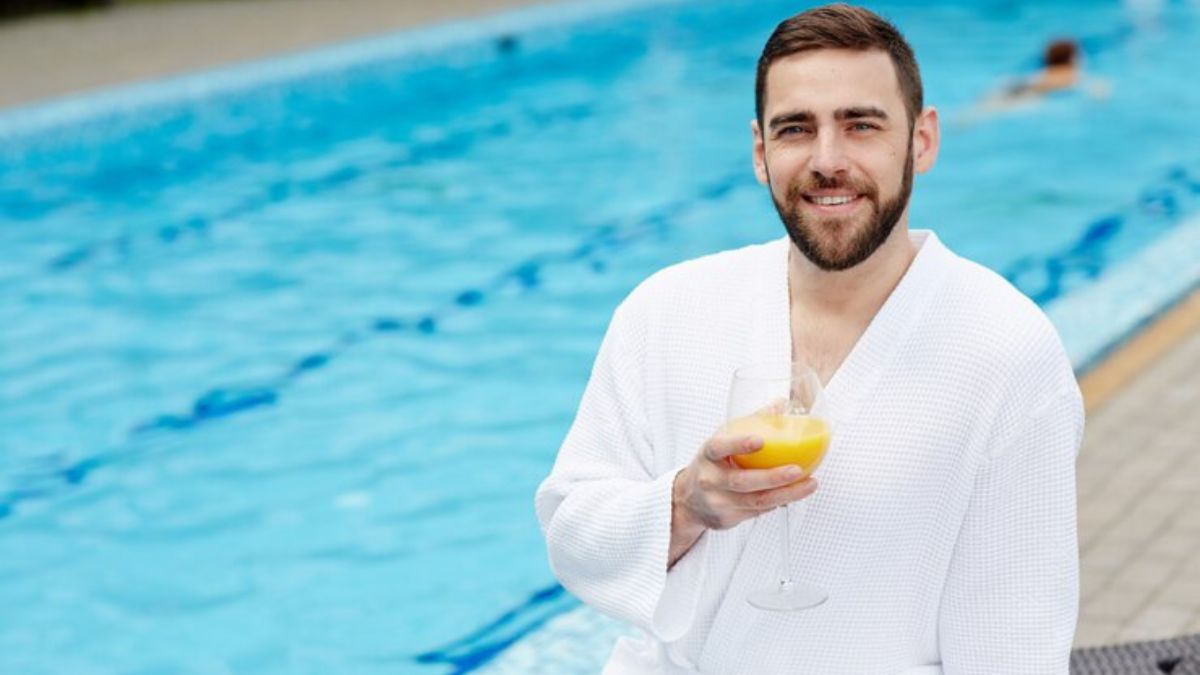Pools are more than just a luxury—they’re a source of relaxation, physical activity, and family fun. From hot summers to cozy evenings, a well-maintained pool can transform your outdoor space into a personal retreat. Over centuries, pools have evolved from simple water reservoirs to technologically advanced and aesthetically pleasing features that suit every lifestyle and budget. Whether you’re considering installing your first pool or looking to upgrade your existing one, this comprehensive guide will walk you through everything you need to make informed decisions, maintain your pool, and maximize your enjoyment.
Types of Pools
In-Ground Pools
- Concrete/Shotcrete Pools: Known for their durability and customizable shapes, concrete pools are a popular choice for those seeking a bespoke pool experience. They require a longer construction time but offer long-term stability.
- Vinyl Liner Pools: These pools feature a steel or polymer frame with a vinyl lining. They are generally less expensive and quicker to install, making them ideal for homeowners wanting a budget-friendly pool.
- Fiberglass Pools: Prefabricated and installed in a single piece, fiberglass pools minimize maintenance and provide a smooth surface, reducing algae growth.
Benefits of in-ground pools include greater design flexibility and increased stability, while drawbacks can involve higher initial costs and longer installation times.
Above-Ground Pools
- Made with various materials such as metal frames or inflatable sections, above-ground pools are a convenient way to enjoy swimming without a significant financial commitment.
- They are generally easy to install and portable, allowing you to relocate or dismantle your pool as needed.
- Cost considerations make above-ground pools an attractive alternative for many families.
Portable & Temporary Pools
- Inflatable pools: Perfect for quick setup and informal use, ideal for small children or impromptu backyard fun.
- Soft-sided pools: Offer greater durability than inflatable pools but are still portable and easy to store.
- Limitations include smaller size, less sturdiness, and simpler design, making them suitable mainly for short-term use or rental properties.
Pool Construction and Design
Planning and Budgeting
- Choosing the right pool type depends on your space, budget, and intended use. Consider factors like size, shape, and features.
- Estimating costs involves accounting for material, installation, permits, and ongoing maintenance. Financing options like loans or payment plans are often available.
- Be sure to check local regulations and obtain necessary permits before starting construction. Consulting professionals can help ensure compliance and safety.
Design Considerations
- Select a size and shape that complements your yard and meets your recreational needs—round, rectangular, freeform, or custom designs.
- Depth variations can provide areas for lounging and diving, increasing the versatility of your pool.
- Integrating landscaping enhances aesthetic appeal, while safety features such as fences and covers protect loved ones.
Pool Installation Process
- Site assessment includes evaluating soil, drainage, and sunlight exposure.
- Site preparation involves clearing the area and excavation for inground pools.
- The actual installation includes setting the shell, plumbing, and electrical systems, followed by filling and balancing chemicals.
- Initial chemical balancing ensures your pool water is safe and clean for swimming.
Pool Maintenance and Upkeep
Regular Cleaning
- Skim floating debris daily using a skimmer net.
- Brush the walls and floor weekly to prevent algae buildup.
- Vacuum the bottom regularly to keep the water clear.
Chemical Balancing
- Maintaining proper pH, alkalinity, and sanitizer levels prevents bacteria growth and water cloudiness.
- Common chemicals include chlorine or salt (for saltwater pools), shock treatments, and pH adjusters.
- Test kits and automatic monitoring systems can simplify chemical management.
Equipment Maintenance
- Regularly inspect and clean pumps, filters, and chlorinators.
- Heaters and other equipment should be serviced periodically to ensure efficiency.
- Using a protective cover during off-season helps prevent debris accumulation and prolongs equipment lifespan.
Seasonal Care
- Spring opening involves thorough cleaning, water testing, and balancing chemicals.
- In fall, lower water levels and winterize plumbing to prevent freezing damage.
- Winterizing protocols include drainage, removing equipment, and covering the pool.
Pool Safety
Safety Features
- Install fencing and barriers around your pool to prevent accidental access, especially for children.
- Pool alarms and covers act as additional safety layers against unsupervised entry.
- Opt for anti-slip surfaces around the pool to prevent slips and falls.
Safe Usage Tips
- Always supervise children and non-swimmers whenever they are in or near the pool.
- Avoid diving in shallow areas to prevent injuries.
- Educate family members about pool rules and proper etiquette to promote safety.
Emergency Preparedness
- Keep rescue equipment, such as life rings and poles, nearby.
- Learn CPR and first aid to respond effectively in emergencies.
- Maintain a list of emergency contacts and local agencies.
Pool Accessories and Equipment
Cleaning Tools
- Robotic cleaners automate debris removal, saving time and effort.
- Manual skimmers and vacuums are cost-effective options for routine cleaning.
Water Features
- Adding waterfalls, fountains, or jets enhances the visual appeal and provides sensory enjoyment.
- Many features are available with adjustable controls for customized ambiance.
Heating and Lighting
- Solar heaters are energy-efficient options for warming your pool.
- LED and underwater lighting create stunning nighttime effects and improve visibility.
- Well-designed lighting can also increase safety during evening swims.
Entertainment and Comfort
- Pool lounges, seating, and shade structures improve comfort and relaxation.
- Sound systems can enhance the atmosphere for parties or quiet swims.
Environmental and Energy Considerations
Water Conservation
- Using a high-quality pool cover helps reduce evaporation, saving water and energy.
- Rainwater harvesting systems can supplement water needs, reducing environmental impact.
Energy Efficiency
- Upgrade to energy-efficient pumps and heaters to decrease electricity costs.
- Explore solar heating options to harness renewable energy for your pool.
Eco-Friendly Alternatives
- Saltwater pools provide a gentler experience and require less chemical use.
- Mineral pools use natural minerals and are considered more environmentally friendly.
Costs and Budgeting for Pools
| Cost Aspect | Estimated Range | Key Considerations |
|---|---|---|
| Initial Installation | $20,000 – $50,000+ | Material choice, size, customization, permits |
| Ongoing Maintenance | $1,200 – $3,500 annually | Chemicals, electricity, repairs |
| Accessories & Upgrades | Variable | Lighting, heating, water features |
Smart budgeting involves planning for both pool installation and the ongoing expenses, ensuring you enjoy your pool without financial surprises. Look for incentives or rebates for eco-friendly equipment to save costs.
Trends and Innovations in Pool Design
- Smart Pool Systems: Automated controls for temperature, lighting, and chemical levels enhance convenience and safety.
- Sustainable & Eco-Friendly Materials: Use of recycled materials, energy-efficient equipment, and natural filtration methods are becoming popular.
- Modern Design Aesthetics: Minimalist looks, infinity edges, and waterfall features create stunning backyard focal points aligning with contemporary styles.
Summary of Key Points
| Aspect | Highlights |
|---|---|
| Pool Types | In-ground, above-ground, portable options |
| Construction | Planning, design, permits, installation steps |
| Maintenance | Cleaning, chemical balancing, equipment upkeep |
| Safety | Fencing, supervision, emergency readiness |
| Accessories | Cleaning tools, lighting, water features |
| Environmental Impact | Water-saving covers, eco-friendly options |
| Costs | Installation, maintenance, upgrades |
| Innovations | Automation, sustainable design |
Frequently Asked Questions (FAQs)
- How much does it cost to install a pool? The average installation ranges from $20,000 to over $50,000 depending on the type and complexity.
- What is the best type of pool for small yards? Above-ground and soft-sided pools are typically more suitable for limited space.
- How often should I clean my pool? Regular cleaning should be done weekly, with additional checks especially during swimming season.
- What safety features are recommended for pool safety? Fencing, alarms, covers, and slip-resistant surfaces are essential safety measures.
- Are saltwater pools better than chlorine pools? Saltwater pools are gentler on skin and eyes and require less chemical handling, making them popular eco-friendly options.
- How can I reduce the environmental impact of my pool? Use covers, opt for solar heating, and choose saltwater or mineral systems to minimize chemical use.
- What are the maintenance costs associated with a pool? Expect to spend approximately $1,200–$3,500 annually on chemicals, electricity, and repairs.
- Is professional installation necessary? While some above-ground pools can be DIY, professional installation ensures safety, proper setup, and compliance with regulations.
- What are the latest trends in pool design? Smart automation, eco-friendly materials, and modern aesthetic features are at the forefront today.
Investing in a pool is a rewarding decision that can enhance your lifestyle and property value. By understanding the types, costs, safety measures, and maintenance required, you’re well on your way to creating your perfect aquatic escape. For more information on professional pool service providers and industry standards, explore reputable sources and consult experts to ensure your pool life is safe, sustainable, and enjoyable.





